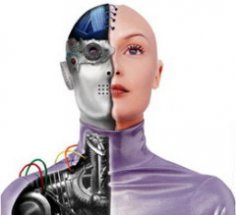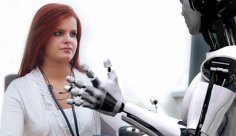
Human arrogance knows no bounds. Sometimes, people imagine themselves to be completely incomprehensible. Moreover, such thoughts often push them to commit completely reckless acts. For example, a man once created a true artificial brain in his own image and likeness. And he called this creation a computer.
What do such electronic equipment have in common with the human psyche? At first glance, it's hard to imagine a more absurd question. What's the difference between the living and the nonliving, the reader might ask. And they'd be right. Humans are not only endowed with free will, but also capable of development, while computers are not.
True, the internal state of this device is constantly changing. But how then is such a mechanism different from a watch or a car? Nevertheless, as a psychiatrist, I counted six such analogies. This is one of the most important factors determining the nature of a person's relationship with computer technology. It was this topic that led me to turn to psychoanalytic journalism more than eight years ago.
Analogy One: BODY AND MIND. What's immediately striking is that the hardware itself is similar to brain matter. Its resources are similarly rigidly predetermined and, within broad limits, virtually unchangeable. But the software can always be replaced or updated. Therefore, this part of the computer coincides with social attitudes and acquired skills that a person acquires through the learning process.
Analogy two: a worldview. The computer's system unit is connected to a monitor, through which information becomes accessible to the user. Such images are very similar to the images that arise in our heads and are based on impressions received from contact with external reality. But such sensations do not always accurately reflect the surrounding environment. And it doesn't matter what factors generate such distortions—organic, associated with irreversible brain damage, toxic, or psychogenic. This is a model of human consciousness.
The third analogy is the NERVE CELL. Its essence lies in the correspondence of the simplest element of machine “language” (the bit) to the two fundamental states of a nerve cell, which can be either excited or quiescent. Behind these “signals” lie two values that the “bit” can transmit (1 or 0). This is a kind of molecular-cybernetic Eros and Thanatos. Interestingly, a computer “word” has eight values, which also roughly coincides with the optimal amount of information we remember (five to nine elements).
Analogy four—SEALED EXPERIENCE—describes devices and processes that exist on the border between the rigidly defined and the functional, but are significantly closer to the latter. It's perfectly clear that if nature hadn't endowed humans with the ability to indirectly record everything that happens to them, they simply wouldn't survive in such a volatile world. How else would humans determine the essence of the things they encounter—whether they pose a threat or, conversely, are extremely useful? A computer has random access memory (RAM), which is functionally equivalent to our short-term memory. A hard drive is also a kind of memory, but long-term.
Analogy number five: INSPIRATION. It's well known that a computer simply can't function without a boost. This function is performed by a special device called a timer. It synchronizes the electronic impulses that continuously flow through the computer's microchips. Humans also have something similar. This role is played by emotional reactions, which can mobilize limited human resources in difficult times.
Analogy six – MIRROR SYMMETRY. The computer has recreated a property of our brain: the duality of information processing. The brain is divided into two hemispheres. The left half of this vital human organ is responsible for sequentially processing information, element by element. Therefore, speech is associated with this hemisphere. The right side of our central nervous system, however, primarily processes images or monolithic semantic blocks.
The first type of regularity is embodied in a computer in the form of a serial interface. A mouse is typically connected to this input (COM). The second type can be compared to a parallel interface (LPT), which is used to connect a printer.
So, man has created a computer, using himself as a model. But what awaits humanity in the distant future, when the newly born “child” grows up? And will the relationship between living and artificial intelligence remain as serene as it is today? But more on that in my other publications.





